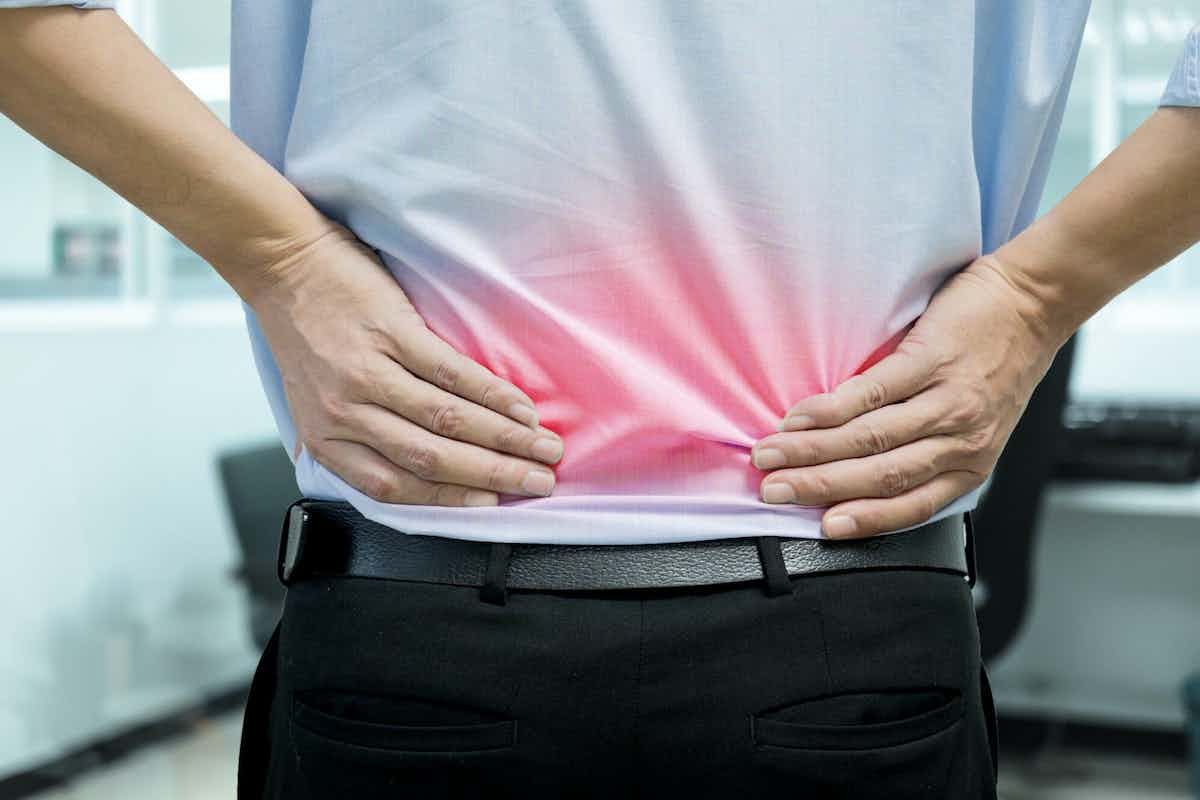Pain Management Doctors in Las Vegas, NV.
-
Call for help: (702) 684-7246
-
Pain Management Doctors in Las Vegas, NV.
Call for help: (702) 684-7246

Have you been diagnosed with an inguinal hernia? It’s a common problem, especially in men.
Of the various types of hernia, inguinal is one of the most common. If you’re wondering can an inguinal hernia cause pain after being surgically repaired, the answer is yes.
Here’s what you should know about inguinal hernia treatment.
What Is an Inguinal Hernia?
An inguinal hernia can occur at any age and appear on one or both sides of the body. An infant can have one at birth that doesn’t present until adulthood.
Activities that strain the abdominals, like lifting heavy weights, heavy coughing, or straining to use the bathroom, can lead to a hernia. Being overweight also increases the chances of developing one.
People with a family history of inguinal hernias are at a higher risk for developing one. Premature infants are also at higher risk.
Can an Inguinal Hernia Cause Pain After Being Repaired?
If you think you may have developed an inguinal hernia, there are some symptoms you should be aware of.
Symptoms may include:
Symptoms in Children
Newborns and children can develop an inguinal hernia if there’s a weakness in the abdominal wall. This is usually present from birth.
The hernia may only be noticeable when a baby coughs, cries, or has a bowel movement.
If the hernia is causing pain or discomfort, a baby may be more irritable and have less of an appetite than usual. In older children, an inguinal hernia may be noticeable when they cough, strain during a bowel movement, or stand for lengthy periods of time.
Signs of Trouble
If you have a bulging hernia that cannot be pushed in, the contents may be trapped in the abdominal wall. This is also referred to as an incarcerated hernia.
This condition can become very serious if the incarcerated hernia becomes strangulated. When this happens, it can cut off blood flow to the tissue and can be life-threatening without proper hernia treatment.
Signs of a strangulated hernia included:
Types of Hernias
There are two types of inguinal hernias. These include:
Indirect Inguinal Hernia
This is the most common type of inguinal hernia and is one that you’re born with. Although men and women can have this type of hernia, it’s more common in men.
The male testicle must go through an opening in the groin to reach the scrotum, which is the sac that holds the testicles. If the opening doesn’t close at birth, then a hernia may develop.
This type of hernia may occur in female reproductive organs. The small intestine can slide into the groin area if there’s a weakness in the abdominal muscles.
Direct Inguinal Hernia
This type of hernia is a result of weakening abdominal muscles. This condition occurs over time and is more common in adults. A direct inguinal hernia only occurs in males.
When to See a Doctor
You should see a doctor right away if you have a hernia bulge that turns red or dark in color or if you develop any symptoms of a strangulated hernia.
If you have a noticeable or painful bulge on either side of your pubic bone or groin area, see your doctor. A hernia is more noticeable if you’re standing. You may be able to feel it when you touch the affected area.
Causes of an Inguinal Hernia
There is no apparent cause of an inguinal hernia in many cases. Others can be a result of:
Inguinal Hernia Repair
Many patients require inguinal hernia repair. During this surgery, the bulging hernia tissue is pushed back into the abdomen.
The abdominal wall is supported and strengthened with sutures and sometimes mesh. This surgery can be performed with open or laparoscopic surgery.
Pain After Hernia Surgery
It’s normal to experience some pain following hernia surgery. It’s a normal part of the healing process.
If you’ve had surgery for an inguinal hernia and continue to have pain for six months, it’s considered chronic pain. Chronic pain after hernia surgery isn’t normal, and it’s not something you should ignore.
It can indicate nerve damage, nerve injury, or inflammation around the surgical site. If you experience ongoing pain after inguinal hernia surgery, you may want to see a pain specialist who can evaluate your pain and recommend the best option for relief.
Dorsal Root Ganglion (DRG) Stimulation
DRG stimulation is a neurostimulation technique that targets pain at the source. This technology is similar to spinal cord stimulation (SCS), which is a common pain relief therapy.
DRG has been shown to be effective for many patients experiencing chronic pain after inguinal hernia surgery. With this therapy, a doctor uses a small device that looks similar to a pacemaker.
The doctor implants the device under the skin to deliver mild electric stimulation near the buttocks area. This stimulation blocks nerve activity to minimize the pain sensations reaching the brain.
A DRG neurostimulator doesn’t eliminate the cause of the pain. Instead, it changes how the brain perceives pain. A pain specialist can evaluate your pain to determine if dorsal root ganglion stimulation is a viable option for you.
Put Your Health First
Can an inguinal hernia cause pain and other troublesome symptoms following surgical repair? The answer is yes. If you’re coping with pain after inguinal hernia surgery, it’s important to get your symptoms evaluated by a medical professional.
You don’t have to deal with chronic pain. At Innovative Pain Care, we specialize in helping those living with pain get relief and improve their quality of life. And we’d love to help you, too.
Contact Innovative Pain Care today to schedule an appointment.